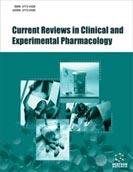Abstract
Background: Successful integration of in vitro into in vivo data on Drug-Drug Interaction (DDI) is dependent on the inhibitory concentration used. Obtaining plasma concentration of a drug is only readily available for a small number of drugs in clinical practice. We propose the use of a therapeutic range as a substitute for inhibitory concentration.
Objective: Because of this, we aimed to construct a linear-regression model based on the areaunder- curve of the victim drugs and the therapeutic range for a set of known inhibitors of the CYP2D6 of interest.
Methods: Correlation analysis of linear log-log regression of two main variables: The Area-Under- Curve ratio (AUCr) of the victim drugs and the therapeutic range-to-inhibition constant ratio, with data obtained from literature.
Results: Data were fitted to linear log-log regression, between the average of AUCr values and mean value of therapeutic range-to-inhibition constant ratio (TRm-to-Ki), of the inhibitory drugs.
Conclusion: According to our results, knowledge of the inhibition constant and therapeutic range (or its plasma levels if disponible) of the inhibitor would be sufficient to determine the intensity and clinical relevance of a CYP2D6-mediated DDI.
Keywords: Drug-drug interactions, cytochrome p-450, pharmacokinetics, clinical pharmacology, area-under-curve, inhibition constant, therapeutic range.
Graphical Abstract
[PMID: 29162215]
[http://dx.doi.org/10.1111/j.1365-2125.2003.02041.x] [PMID: 15025746]
[http://dx.doi.org/10.1023/A:1009935116877] [PMID: 12578052]
[http://dx.doi.org/10.1124/dmd.31.3.289] [PMID: 12584155]
[http://dx.doi.org/10.1124/dmd.111.041210] [PMID: 21976621]






























